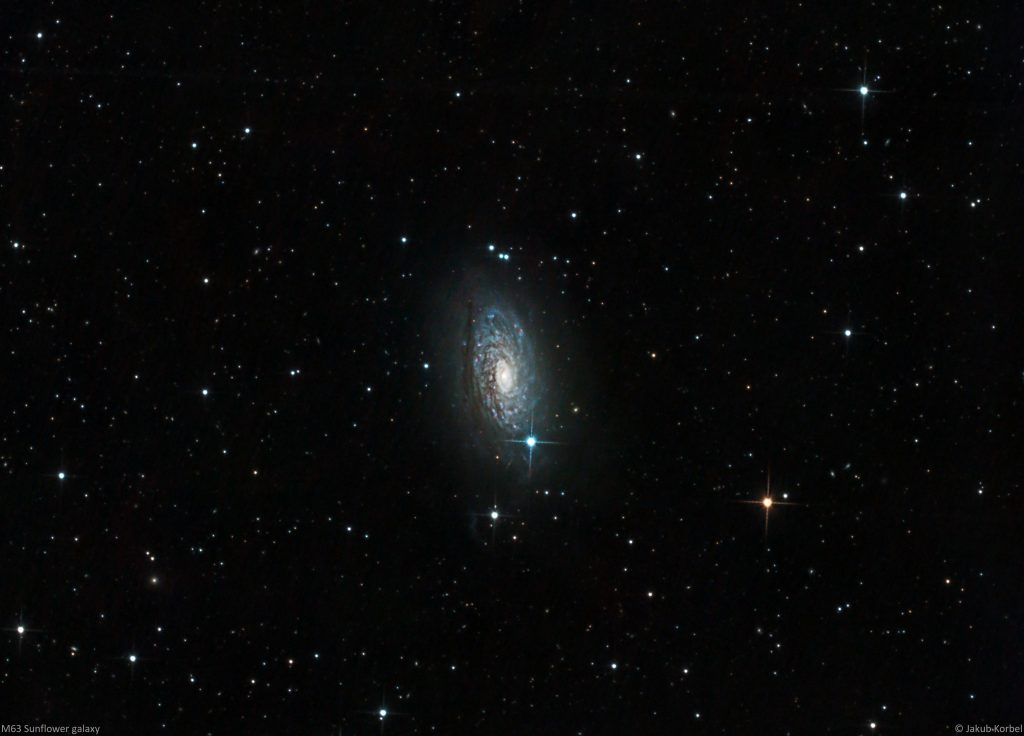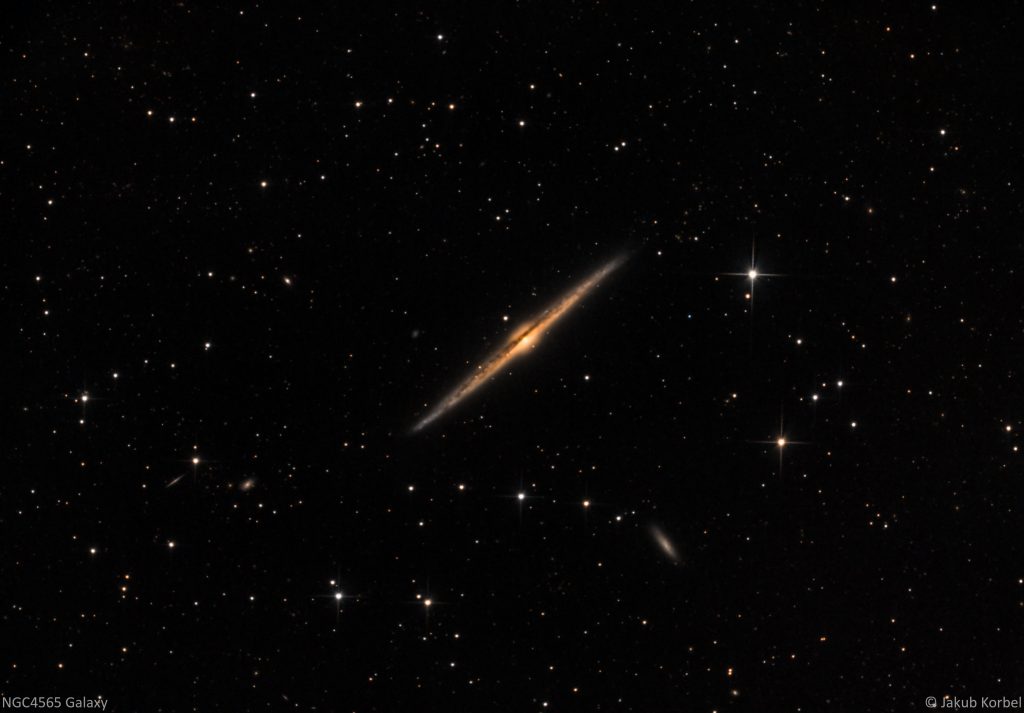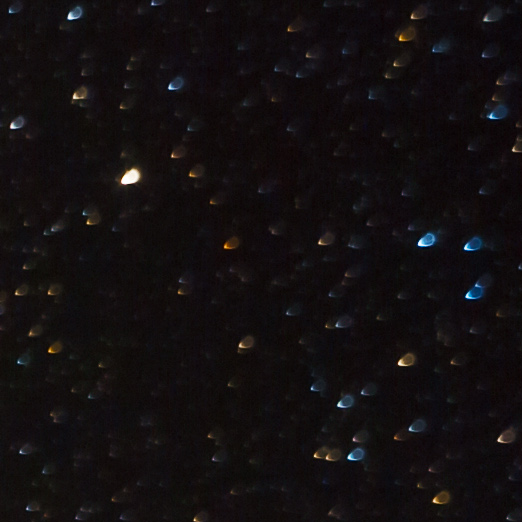Another captured galaxy this spring. Sunflower Galaxy located in constellation Canes Venatici (hunting dogs) just like M106 or M51 galaxies. M63 has nicely visible spiral arms, it’s 27 million light-years far from us and it’s so called active galaxy, which means that the center of the galaxy is significantly brighter due to presence of supermassive black hole at the center of the galaxy.
For this picture I used new astro-camera ZWO 1600 MC, which is one-shot color camera. This means no filter wheel is needed and camera is much lighter than my old Moravian Instruments G2 8300M. The disadvantage of this camera is that it’s not possible to use narrow band filters. However, for RGB the performance is quite comparable.




